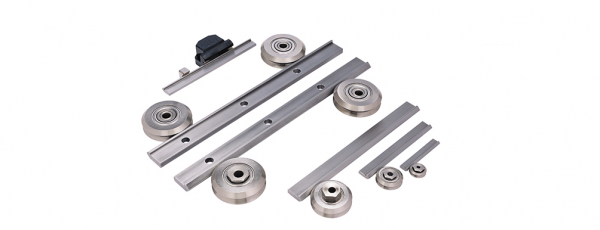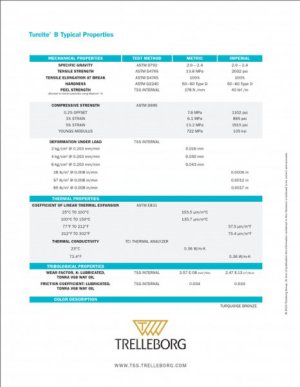-
Welcome back Guest! Did you know you can mentor other members here at H-M? If not, please check out our Relaunch of Hobby Machinist Mentoring Program!
You are using an out of date browser. It may not display this or other websites correctly.
You should upgrade or use an alternative browser.
You should upgrade or use an alternative browser.
B
Bill Gruby
Forum Guest
Register Today
Thank you Bill. The chart will help. I saw it once and was going to look for it today. You saved me that chore.
"Bill"
"Bill"
- Joined
- Feb 8, 2014
- Messages
- 11,144
Having trouble seeing the need for a zero/low lash coupling on the table drive. There won't be any cases where the table will need to stop in a precise location that I can think of. Normally, the table runs out from under the wheel some small but arbitrary position before reversing direction.
And Bill, are you saying you are using a rack and pinion for the main table drive? I've thought about that on a few projects, but mentally can't get past the upward force by the engagement angle of the teeth. Unless the table is possibly constrained somehow or is just plain heavy enough to negate this effect. I've been under the impression that this is one reason that many of the smaller grinders use a belt drive there. No criticism intended, just sort of thinking out loud.
Tony your are correct. There is no need for a zero lash coupling on the table drive. The primary reason I suggested the coupling I designed is for the quick disconnect functionality, zero lash is just a bonus in this case.
Years ago I spent (too) many hours cranking a 612 Boyar-Schultz that had a rack & pinion table drive. And yes, if you got a little too aggressive with the hand crank, it was possible to lift the table with the rack & pinion.
.
.
B
Bill Gruby
Forum Guest
Register Today
To take some of the ability to get too aggressive in cranking I am proposing a spider type handle instead of a crank. It is my belief that using a spider will give you a smoother manual table movement using less torque. The decrease in power needed to manually move the table should keep the rack from lifting. Am I on the right track here.
"Billy G"
"Billy G"
- Joined
- Feb 8, 2014
- Messages
- 11,144
I'm not exactly sure what you mean Bill. The larger the crank, the more torque you are able to apply to the pinion. The faster you accelerate the table, even by hand, the chances of lifting the table increase. But it only takes a couple of minutes to learn how to crank any surface grinder and operate it smoothly. The motion profile I posted above applies to hand cranked as well as motor powered.
One thing you need to consider is the motion that your arm will make when operating, you need to keep the motion in a comfortable range or you will wear yourself out in short order.
One thing you need to consider is the motion that your arm will make when operating, you need to keep the motion in a comfortable range or you will wear yourself out in short order.
B
Bill Gruby
Forum Guest
Register Today
If you use a spider wit say four legs 12 inches long it will take less torque on the operators part to get the table moving. This less torque does translate to more torque at the rack but at the same time less to create more in our case is better in my opinion. Feel free to jump on this everyone. So far this is only a thought and can be easily changed to something better.
"Bill"
"Bill"
I believe you are on the right track bill. Correct me if I'm wrong, but if we go with the linear bearings, even though they have an opening on the bottom, aren't they still captured on the rod and this will keep the table from lifting as easy or any at all?
- Joined
- Feb 8, 2014
- Messages
- 11,144
I have seen surface grinders with a crank as you describe, but I have never used one. I think they were more production machines rather than tool room machines. I suspect the gear ratio from the crank to table was pretty high so you could get a long stroke with minimum arm movement. Just a guess. I have also seen surface grinders with a lever to move the table.
Here is a picture of the type of ball bearing V-rail I spoke of earlier.

Here is a picture of the type of ball bearing V-rail I spoke of earlier.



